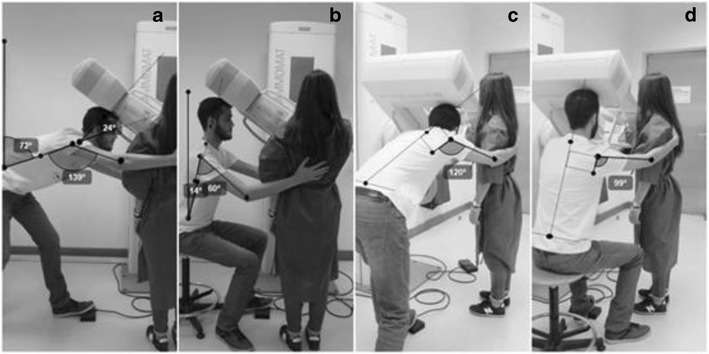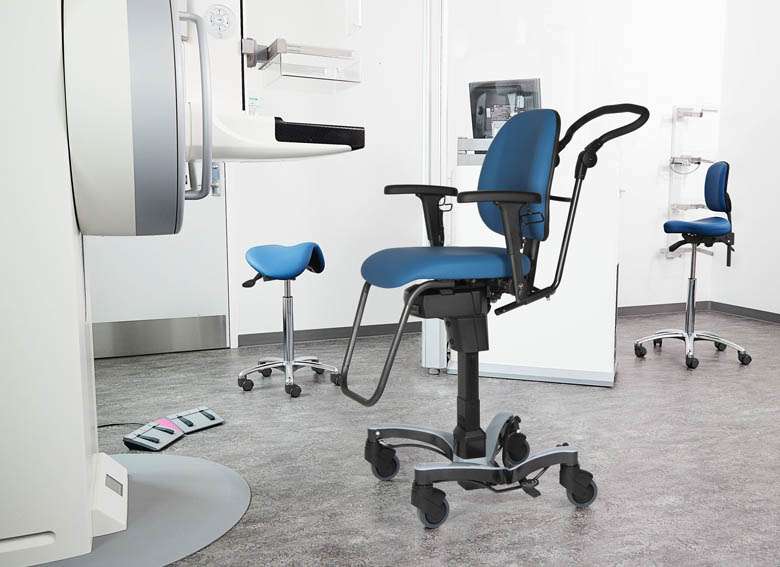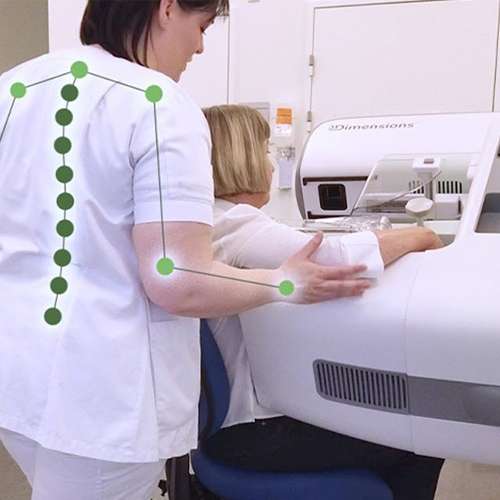Working in a mammography department involves the use of high-quality imaging equipment to capture early signs of breast cancer. The job is a demanding one; as well as setting the patient at ease with good interpersonal skills, the mammographer will need to carry out repetitive movements in positioning the equipment to capture the best quality images.
These continual repetitive movements, as with any occupational role, can cause RSIs (repetitive strain injuries) and result in work-related musculoskeletal disorders (WRMSDs) amongst staff if left unchecked.
The issue of MSDs within mammography units has been studied and reported on to understand the main drivers of this issue and protect staff’s musculoskeletal health.
Jump straight to…
The Problem
The high occurrence of staff RSIs and the effect on staff health and workforce capacity is a common problem for breast screening units. A recent study by Siemens cited poor workplace ergonomics and physical stress as a leading cause of high radiology staff turnover and fewer new recruits.
Repetitive strain injuries are caused by staff using repetitive movements to position the equipment and support the patient, sometimes adopting awkward postures. It can also be exacerbated by other factors, such as:
- Long working hours
The current drive for breast screening under the NHS Breast Screening Programme has encouraged lots of women to come forward for elective screening. This has been driving up the waiting list and putting greater demand on radiography and mammography teams to work through the backlog.
- Less staff coverage
Staff downtime due to WRMSDs causes a vicious cycle, putting extra pressure on already under-resourced teams.
- Fewer downtime opportunities
The opportunity for regular breaks throughout the working day is essential to minimise the risk of RSIs. In the whirlwind of a busy day and high patient lists it can be all too easy to forgo taking breaks and the physical and mental benefits this brings.
Data Supporting the Problem
A study was undertaken in 2017 to identify ergonomic strategies that could improve radiographer’s posture and reduce RSI risk. A variety of scenarios were recorded, using both craniocaudal (CC) and mediolateral oblique (MLO) views in three different positions: radiographer and patient with similar statures, radiographer taller than patient, and radiographer smaller than patient.
The unacceptable postures occurred mainly during MLO positioning when the radiographer was taller than the patient. Seating the radiographer improved the posture into acceptable ranges, shown in fig. 4 below.
The outcome of the study concluded that adapting their posture in line with the patient’s biotype can reduce the WRMSD risk for radiographers.

Fig. 4 MLO breast positioning
The Solution
Employers have a legal duty to protect employees’ health, and make necessary provision to prevent MSDs or RSIs under the H&S at Work Regulations 1999.
There are lots of steps mammography supervisors can take to protect their staff’s health and reduce the prevalence of RSIs:
- Carry out risk assessments. First and foremost, the hospital management have the employment responsibility to risk-assess all aspects of the working environment. This includes the physical attributes of the work being done and fatigue this could cause to the individual.
- Sitting patients or mammographers down. As shown by the results of the survey, sitting either the radiographer or the patient can eliminate height differences and reduce strain when guiding the equipment and supporting the patient at the same time.
- Upgrade mammography seating. Having seating with the right ergonomic features can make life significantly easier for mammographers, such as the VELA mammography chair covered below.
- Staff rotation and working patterns. Having the right systems in place so that staff can work in timed shifts reduces the build-up of physical stress on the body. Rotating staff between screening and assessment clinics allows the necessary physical downtime. This of cause depends on staff resources, but using the right equipment can also increase efficiencies and workflow.
- Performing moving and stretching exercises before the day starts and during micro-breaks throughout the day has been shown to have positive effects on musculoskeletal health.
- Room size and design. A well laid-out working environment can reduce RSIs and improve workflow.
VELA Mammography Chair
The challenges faced by mammographers from uncomfortable positioning can be addressed by incorporating ergonomic design principles into chairs used for breast imaging.
The VELA mammography chair has lots of positioning options to allow radiographers to find the most comfortable positions for them and the patient, reducing strain and supporting healthy posture.

VELA Mammography chair

The VELA mammography chair has been highly endorsed for its ergonomic benefits, as in the case of a mammographer working at Nottingham University Hospitals Trust. After being signed off sick due to the physical toll the job was taking on her body, she experienced a significant improvement in her musculoskeletal health by using the chair for her patients.
The chair has also been given glowing reviews by the Sam Rodgers Health Centre in the US for its benefits to patients, providing stability and clear imaging results.
Conclusion
Mammography staff and superintendents should be made aware of the modifications that can be introduced into a busy screening environment that can reduce physical stress and strain.
Public Health England’s publication provides lots of further guidance about best practice in mammography units: Breast screening mammography: ergonomics good practice – GOV.UK (www.gov.uk)
Want to see the mammography chair in action? Request a teams demonstration here:
Free & No Obligation Assessment














